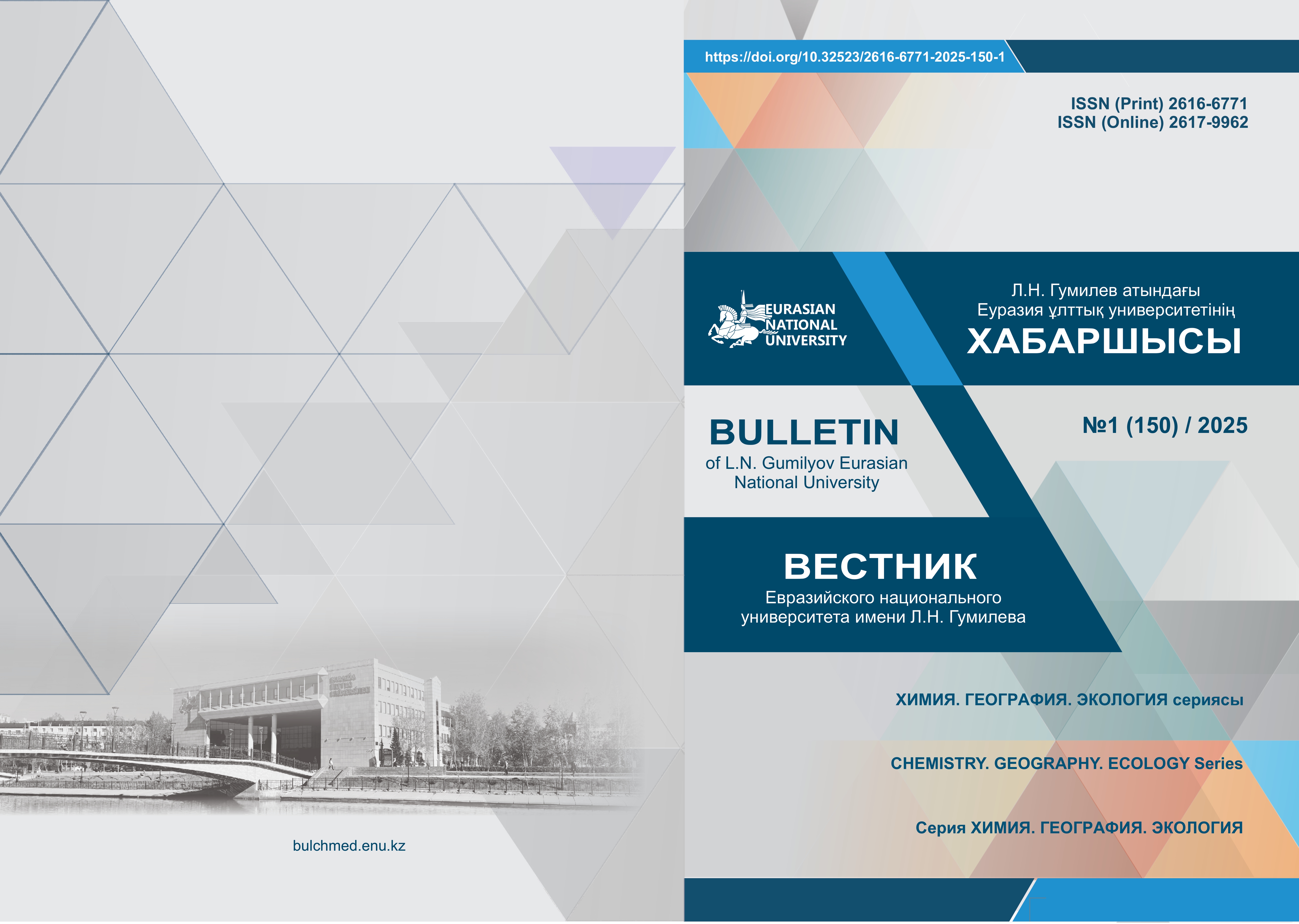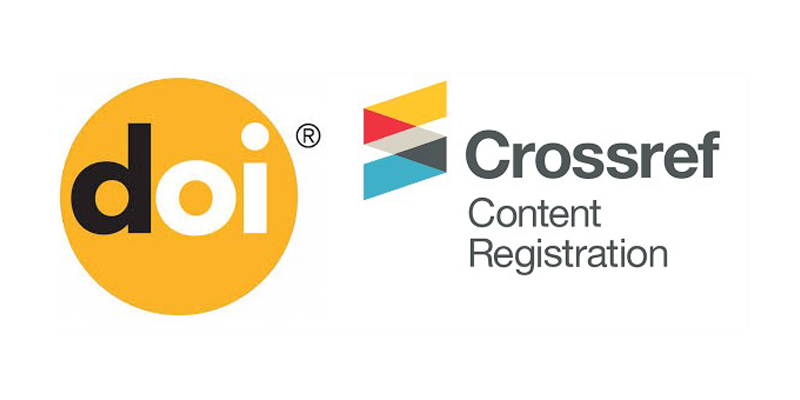Өнеркәсіптік деректер негізінде бекітілген қабаттағы каталитикалық риформинг процесін модельдеу
Қаралымдар: 347 / PDF жүктеулері: 124
DOI:
https://doi.org/10.32523/2616-6771-2025-150-1-36-51Кілт сөздер:
математикалық модельдеу, мұнай өңдеу, оңтайландыру, ресурстарды тиімді пайдалану, мұнай химиясы, каталитикалық риформингАңдатпа
Бұл зерттеуде каталитикалық риформинг процесінің кинетикалық үлгісі коммерциялық тұрақты катализатор зауытының деректерін пайдалана отырып әзірленді. Модельдік параметрлер есептелген мәндер мен өнеркәсіптік деректер арасындағы сәйкессіздіктерді азайту арқылы, қайта пішімдеу құрамын болжауда жоғары дәлдікті қамтамасыз ету арқылы анықталды. Ұсынылған модель жалпыланған тәсілдердің қарапайымдылығын егжей-тегжейлі үлгілердің артықшылықтарымен біріктіреді, бұл қайта пішімдеу құрамын тиімді болжауға және негізгі технологиялық айнымалыларды (температура, қысым, сутегі/көмірсутек қатынасы және беру жылдамдығы) есепке алуға мүмкіндік береді. Валидация зертханалық изотермиялық деректермен де, оның практикалық қолдану мүмкіндігін растайтын өнеркәсіптік деректермен де жүргізілді. Осы үлгі бойынша әзірленген бағдарламалық қамтамасыз ету жоғары дәлдікті көрсетті, ароматты көмірсутек концентрациясын анықтауда 3%-дан аз және 1%-дан аз қателікпен есептеу қателері бар. Бұл нәтижелер модельдің дәлдігін растап, оны нақты уақыттағы процесті басқару және оңтайландыру үшін қолайлы етеді. Модельді өнеркәсіпте қолдану мақсатты өнімдердің шығымдылығын арттырып, отын сапасын жақсартып қана қоймайды, сонымен қатар жұмыс режимдерін оңтайландыру және катализатордың қызмет ету мерзімін ұзарту арқылы өндіріс шығындарын азайтады. Экологиялық ережелерді қатайтуды ескере отырып, модель мұнай өңдеу зауыттарында тұрақты дамуды қамтамасыз етудің маңызды құралы болып табылады. Болашақ зерттеулер оның цифрлық басқару жүйелерімен интеграциясын жақсартуға және Қазақстанның мұнай-газ кәсіпорындарында энергия тиімділігін оңтайландыруға мүмкіндік береді.
Downloads
Әдебиеттер тізімі
Arani, H. M., Shirvani, M., Safdarian, K., & Dorostkar, E. (2009). Lumping procedure for a kinetic model of catalytic naphtha reforming. Brazilian Journal of Chemical Engineering, 26(4), 723–732. https://doi.org/10.1590/S0104-66322009000400011
Chen, J. (2023). Hydrogen production in fixed-bed reactors with combined reformer-burner modules by steam-ethanol reforming at different temperatures. Authorea Preprints, 6, 18. https://doi.org/10.22541/AU.167569381.13621304/V1
Chen, Z., Wang, Y., Li, Y., Wu, J., & Zhang, L. (2023). Explicit molecule-based reaction network simplification: Theory and application on catalytic reforming. Chemical Engineering Science, 277, 118833. https://doi.org/10.1016/j.ces.2023.118833
Elizalde, I., & Ancheyta, J. (2015). Dynamic modeling and simulation of a naphtha catalytic reforming reactor. Applied Mathematical Modelling, 39(3-4), 764–775. https://doi.org/10.1016/j.apm.2014.07.013
GOST 6370-83 (ST SEV 2876-81). (n.d.). Neft', nefteprodukty i prisadki. Metod opredeleniya mekhanicheskikh primesey (utratil silu) [Oil, petroleum products and additives. Method for determining mechanical impurities (invalid)]. Retrieved February 2, 2025, from https://online.zakon.kz/Document/?doc_id=30008237
Gosudarstvennyy standart Soyuza SSR. (n.d.). Neft'. Izdaniye ofitsial'noye. IPK Izdatel'stvo Standartov Moskva sertifikatsiya elektrooborudovaniya [State Standard of the Union of the SSR. Oil. Official Edition. IPK Publishing House of Standards Moscow certification of electrical equipment].
Jarullah, A. T., Ahmed, A. N., Altabbakh, B. A., & Ahmed, A.M. (2023). Design of new composites nano-catalysts for naphtha reforming process: Experiments and process modeling. Tikrit Journal of Engineering Sciences, 30(2), 46–59. https://doi.org/10.25130/TJES.30.2.6
Krane, H., Groh, A., Schulman, B., & Sinfelt, J. (1959). Reactions in catalytic reforming of naphthas.
Martínez, J., Zúñiga-Hinojosa, M. A., & Ruiz-Martínez, R. S. (2022). A thermodynamic analysis of naphtha catalytic reforming reactions to produce high-octane gasoline. Processes, 10(313), 22. https://doi.org/10.3390/PR10020313
Matematicheskoye modelirovaniye dlya prognozirovaniya raboty katalizatorov riforminga na ustanovke so statsionarnym sloyem. (n.d.). Retrieved February 25, 2025, from https://magazine.neftegaz.ru/articles/pererabotka/786371-matematicheskoe-modelirovanie-dlya-prognozirovaniya-raboty-katalizatorov-riforminga-na-ustanovke-so [Mathematical modeling for predicting the performance of reforming catalysts in a fixed bed reactor].
Mokheimer, E. M. A., Shakeel, M. R., Harale, A., Paglieri, S., & Mansour, R. B. (2024). Fuel reforming processes for hydrogen production. Fuel, 359, 130427. https://doi.org/10.1016/j.fuel.2023.130427
Pasandide, P., & Rahmani, M. (2021). Simulation and optimization of continuous catalytic reforming: Reducing energy cost and coke formation. International Journal of Hydrogen Energy, 46(43), 30005–30018. https://doi.org/10.1016/j.ijhydene.2021.06.151
Ramage, M. P., Graziani, K. R., & Krambeck, F. J. (1980). Development of Mobil’s kinetic reforming model. Chemical Engineering Science, 35(1), 41–48. https://doi.org/10.1016/0009-2509(80)80068-6
Ramage, M. P., Graziani, K. R., Schipper, P. H., Krambeck, F. J., & Choi, B. C. (1987). Kinptr (Mobil’s Kinetic Reforming Model): A review of Mobil’s industrial process modeling philosophy. Advances in Chemical Engineering, 13, 193–266. https://doi.org/10.1016/s0065-2377(08)60018-6
Rekoske, J. E., Abrevaya, H., Bricker, J. C., Zhu, X., & Bricker, M. (2017). Advances in refining technologies. In Advances in refining catalysis (pp. 3–58). CRC Press. https://doi.org/10.1201/9781315370125-2/ADVANCES-REFINING-TECHNOLOGIES-JAMES-REKOSKE-HAYIM-ABREVAYA-JEFFERY-BRICKER-XIN-ZHU-MAUREEN-BRICKER
Rodríguez, M. A., & Ancheyta, J. (2011). Detailed description of kinetic and reactor modeling for naphtha catalytic reforming. Fuel, 90(11), 3492–3508. https://doi.org/10.1016/j.fuel.2011.05.022
Russel, A. S., Gupta, S., & Deo, G. (2023). The rate determining steps and rate equation for the oxidative dry reforming of methane over supported Ni catalyst. Journal of Environmental Chemical Engineering, 11, 110479. https://doi.org/10.1016/j.jece.2023.110479
Samad, A., Ahmad, I., Kano, M., & Caliskan, H. (2023). Prediction and optimization of exergetic efficiency of reactive units of a petroleum refinery under uncertainty through artificial neural network-based surrogate modeling. Process Safety and Environmental Protection, 177, 1403–1414. https://doi.org/10.1016/j.psep.2023.07.046
Sapre, A. V., & Katzer, J. R. (2020). Some aspects of modeling in petroleum processing. In Computer-Aided Design of Catalysts (pp. 553–602). CRC Press. https://doi.org/10.1201/9781003067115-13
Sotelo-Boyás, R., & Froment, G. F. (2008). Fundamental kinetic modeling of catalytic reforming. Industrial & Engineering Chemistry Research, 48(3), 1107–1119. https://doi.org/10.1021/ie800607e
Stijepovic, M. Z., Vojvodic-Ostojic, A., Milenkovic, I., & Linke, P. (2009). Development of a kinetic model for catalytic reforming of naphtha and parameter estimation using industrial plant data. Energy and Fuels, 23(2), 979–983. https://doi.org/10.1021/ef800771x/suppl_file/ef800771x_si_001.pdf
Sundari, R., & Vaidya, P. D. (2012). Reaction kinetics of glycerol steam reforming using a Ru/Al₂O₃ catalyst. Energy and Fuels, 26(7), 4195–4204. https://doi.org/10.1021/ef300658n
Velázquez, H. D., Cerón-Camacho, R., Mosqueira-Mondragón, M. L., Hernández-Cortez, J. G., Montoya de la Fuente, J. A., Hernández-Pichardo, M. L., Beltrán-Oviedo, T. A., & Martínez- Palou, R. (2023). Recent progress on catalyst technologies for high quality gasoline production. Catalysis Reviews, 65(3), 1079–1299. https://doi.org/10.1080/01614940.2021.2003084
Wei, M., Yang, M., Qian, F., Du, W., He, W., & Zhong, W. (2017). Dynamic modeling and economic model predictive control with production mode switching for an industrial catalytic naphtha reforming process. Industrial & Engineering Chemistry Research, 56(33), 8961–8971. https://doi.org/10.1021/acs.iecr.7b02610/asset/images/medium/ie-2017-02610s_0013.gif
Wei, W., Bennett, C. A., Tanaka, R., Hou, G., & Klein, M. T. (2008). Detailed kinetic models for catalytic reforming. Fuel Processing Technology, 89(4), 344–349. https://doi.org/10.1016/j.fuproc.2007.11.014
Wei, W., Bennett, C. A., Tanaka, R., Hou, G., & Klein, M. T. (2008). Computer aided kinetic modeling with KMT and KME. Fuel Processing Technology, 89(4), 350–363. https://doi.org/10.1016/j.fuproc.2007.11.015
Yang, X., Wang, S., & He, Y. (2022). Review of catalytic reforming for hydrogen production in a membrane-assisted fluidized bed reactor. Renewable and Sustainable Energy Reviews, 154, 111832. https://doi.org/10.1016/j.rser.2021.111832
Zhorov, Y. M., Kartashev, Y. N., Panchenkov, G. M., & Tatarintseva, G. M. (1980). Mathematical model of platforming under stationary conditions with allowance for isomerization reactions. Chemistry and Technology of Fuels and Oils, 16(6), 297–300. https://doi.org/10.1007/BF00730570
Жүктеулер
Жарияланды
Журналдың саны
Бөлім
Лицензия
Авторлық құқық (c) 2025 R. Dyussova, M. Borashova, Ya. Sergeyevs, I. Kuanyshev (Author)

Бұл жұмыс Creative Commons Attribution-Коммерциялық емес 4.0 халықаралық лицензиясы.








